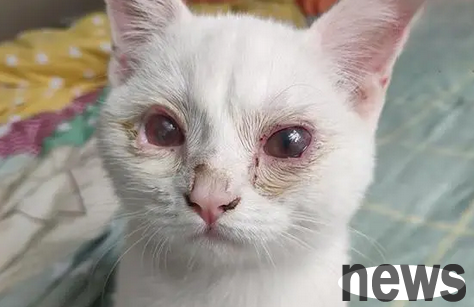Keratitis in dogs and cats is one of the common diseases of the eyes. It has many causes and is relatively complicated. It also requires differential diagnosis from other ophthalmic diseases. Starting today, we will introduce some common knowledge about eye diseases to you in stages!

Clinical symptoms
In the early stage, there are shy tears, pain, conjunctival flushing, eyelid closure, and corneal opacity and ulcers, serous or purulent eye secretions, and severe vision disorders. Corneal damage and bleeding can be seen in traumatic keratitis, and suppuration and ulceration may occur if infected. Canine distemper is often associated with bilateral eyes; in addition to eye symptoms, systemic symptoms are also more obvious, such as depression and body temperature rises to 39.5℃~40.0℃. Corneal turbidity is an opaque white cloud formation on the corneal surface. The turbidity may be localized or diffuse. The new corneal turbidity is not obvious, the surface is rough and bulging, and there are symptoms of inflammation. The old corneal is turbid and has no symptoms of inflammation, and the boundaries are obvious. When the deep cornea is turbid, it is often light blue and cloudy. Corneal neoplasty is a significant local hyperplasia and thickening of the cornea. Corneal ulcers are irregular defects on the surface or deep layers of the cornea. When the corneal perforation is perforated, the cornea ruptures and water and viscous exudates flow out from the rupture, and even the capillaries are exposed. Corneal stigma is an opaque gray-white scar formed in the later stage of corneal turbidity and ulcer. Common causes of trauma are common in dogs that cause injuries caused by biting each other, accidentally kicking, hitting, and dogs playing and scratching each other. Inflammation occurs after cornea injury, and most of these cases are serious. Foreign objects stimulate sand and ash into the eyes to irritate the cornea; eyelashes abnormally stimulate the cornea; sticky substances such as chewing gum stick to the cornea and stimulate the cornea. Drug factors: Use expired eye drops or eye ointments to treat eye tears and cause corneal inflammation. Some people also cause inflammation of the conjunctiva and corneal after being used due to discomfort of certain eye drops. Bacterial and viral infections are found in canine distemper, canine infectious hepatitis, canine herpes virus and Staphylococcus aureus infection. This condition is more common and the condition is more serious. Unexplained causes may be caused by allergic reactions or corneal nutritional disorders.
Treatment plan
is based on the principle of eliminating the cause, anti-inflammatory and pain relief, and promoting absorption. It combines local drug treatment and systemic treatment. Rinse the eyes with normal saline to remove foreign objects and secretions in the eyes.
Guide tips
Be careful to wear Elizabeth circles to prevent further scratches or licking and biting. If the general cleaning, anti-inflammatory or conservative treatment is not effective, or even worsens. You need to go to the eye specialist hospital in time and do not delay.
